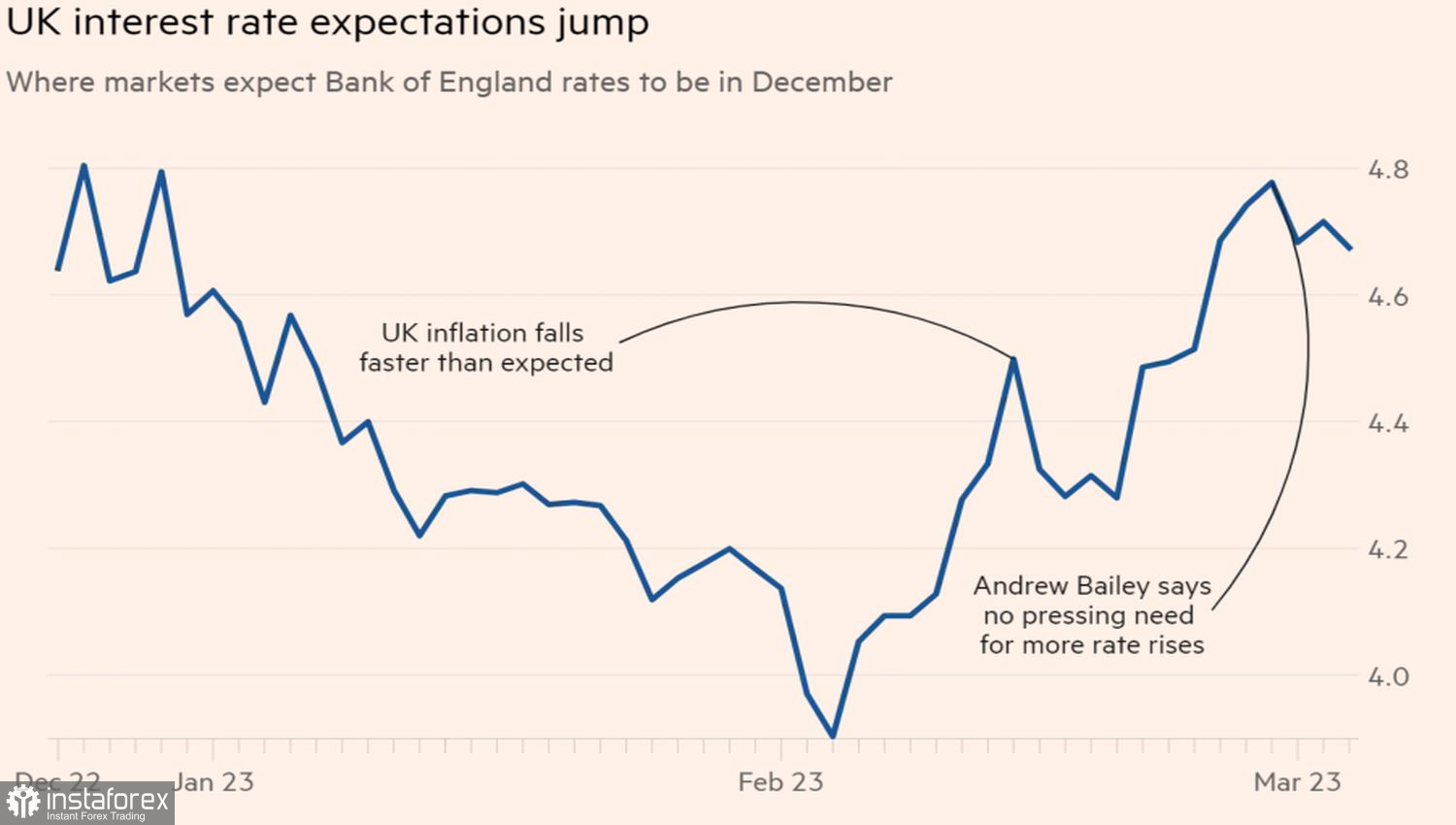Unlike the Fed, whose officials are pretty clear about what they are going to do, the Bank of England prefers to be dramatic. It was the first among the world's major central banks to predict a recession in Britain's economy, and now it is trying to put a barrier in the way of the futures market, expecting to raise the repo rate to 4.6%. Before Andrew Bailey's speech, the peak forecast was even higher, at 4.8%, but the BoE head added drama.
Bailey believes that the futures market is overestimating the expected repo rate peak. The Bank of England, at its last meeting, abandoned the presumption of the need for further increases, and now it would be a mistake to talk about both the end of the cycle of tightening of monetary policy, and that the cost of borrowing will necessarily rise. Everything will depend on the data, and the situation in Britain is fundamentally different from the U.S. Indeed, although consumer prices in the UK are still measured in double digits, core inflation slowed substantially in January from 6.3% to 5.8%.
Dynamics of repo rate ceiling expectations

Despite the mixed macro statistics for the UK, the futures market raised the anticipated repo rate ceiling on the assumption that the BoE would follow the Fed. Central banks usually move in packs, massively tightening or loosening monetary policy following their leader, the Fed. Nevertheless, history shows it is a mistake to count on the BoE blindly copying the actions of their U.S. counterparts. If the monetary restriction cycle in Britain comes to an end in March and continues in the U.S. until June, GBPUSD risks falling.
In this regard, the Reuters consensus forecast of its growth to 1.22, 1.23 and 1.26 in 3.6 and 12 months looks too optimistic. Moreover, according to the results of three months, ending in January, the UK economy is expected to stagnate due to high inflation and the impact of high interest rates on household finances and business activity. According to Investec, despite the improvement in the outlook due to falling energy prices, the economic environment in Britain remains difficult. The service sector was unable to fully recover the December losses in January, including due to strikes.

However, there are always two currencies in any pair, and no matter what problems the pound is experiencing, the weakening of the U.S. dollar against the background of disappointing U.S. employment statistics for February may become the basis for GBPUSD purchases. According to Bloomberg experts, the indicator will increase by 215,000, which is close to the late 2022 figures. According to FOMC member Christopher Waller, if all goes well, the federal funds rate will not exceed 5.5%.
Technically, there is consolidation in the range of 1.194–1.214 on the GBPUSD daily chart. A breakout of its upper limit will increase the risks of growth to 1.22 and 1.23. On the contrary, a successful assault on support at 1.194 will be the basis for sales with a target of 1.182.
 English
English 
 Русский
Русский Bahasa Indonesia
Bahasa Indonesia Bahasa Malay
Bahasa Malay ไทย
ไทย Español
Español Deutsch
Deutsch Български
Български Français
Français Tiếng Việt
Tiếng Việt 中文
中文 বাংলা
বাংলা हिन्दी
हिन्दी Čeština
Čeština Українська
Українська Română
Română

